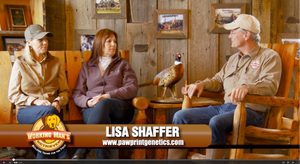As discussed in my last blog, before buying a puppy, there are many things that the careful and wise buyer wants to educate themselves about to ensure the best experience possible. Once you have figured out which breed(s) suits/interests you and have educated yourself about the positives, negatives and potential issues, including health issues, the final step is to find possible breeders of interest and most importantly at long last - your puppy! Many breeders are doing their due diligence to produce and raise the best puppies possible. 0thers are just giving this lip service, and with all the seemingly "right" answers to questions, it is not always easy to tell the difference.
No one can guarantee a healthy puppy. Just like human couples that do "everything right" during the pregnancy will say "we do not care if we have a boy or a girl, as long as the baby is healthy". Even with the utmost of caution, things can and do go wrong. Some have perpetuated the notion that a responsible breeder can guarantee a perfect and normal outcome in every way and that anything wrong is the breeder's fault. Just ...








